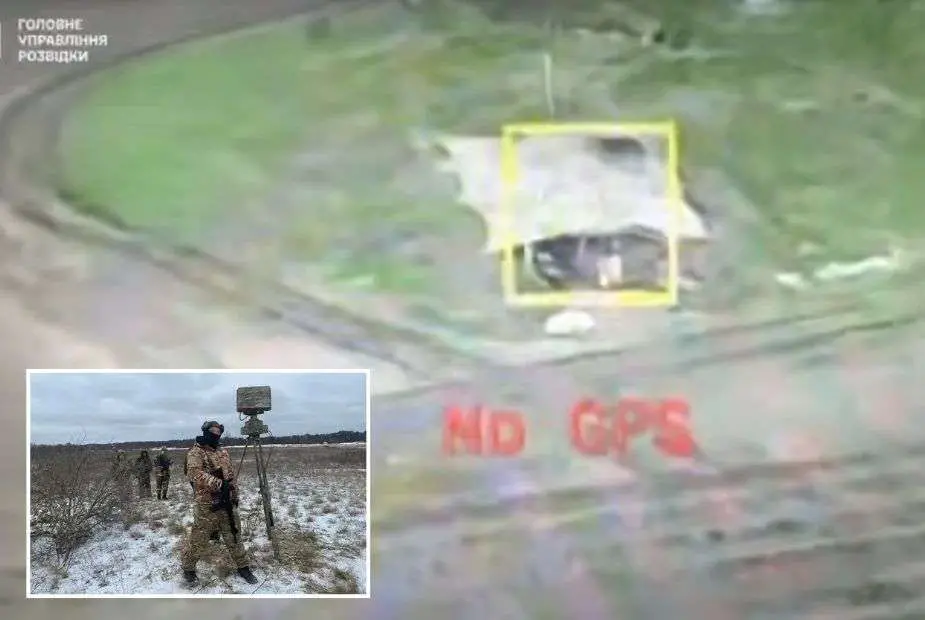Breaking news
Ukrainian forces use Polish Warmate drones to destroy Russian radars Repeynik and Podlet-K1.
The Ukrainian Ministry of Defense has reported successful operations using Polish Warmate loitering munitions to target and destroy Russian radar systems. The strikes, which occurred on April 27 and 28, 2024, targeted the mobile 48Ya6-K1 Podlet-K1 and the portable Repeynik radars, both crucial to the Russian military's detection capabilities.

The Russian 48Ja6-K1 Podlet-K1 just before being destroyed by Polish Warmate loitering munition drone (Picture source: Ukrainian MoD)
On April 27, the Main Intelligence Directorate of Ukraine (HUR MO) released footage of an attack conducted by the Special Unit Gusy-9 in collaboration with the 15th Independent Artillery Reconnaissance Brigade, known as Black Forest. The operation targeted a Podlet-K1 radar located in the village of Krasnaya Polana in Russia's Belgorod region. This mission involved the deployment of at least two Warmate drones; one drone struck the radar's active antenna while the other hit its command and power supply cabin.
The Podlet-K1 radar, also known as 48Ya6-K1, is a mobile solid-state radar station developed by the Russian defense company "Almaz-Antey". It is specifically designed to detect air targets at low and extremely low altitudes. This three-dimensional radar station employs a circular scan phased-array radar to track flying objects, even in complex interference scenarios. Its primary role is to provide target information to surface-to-air missile systems such as the S-300 and S-400.
Development of the Podlet-K1 began in 2009, followed by state trials in 2010, and it was deployed to the Russian Air Defense Forces in 2015. The radar's capabilities include automated target identification and precise coordinate determination, allowing it to monitor various aerodynamic targets, especially those that are difficult to detect and track.
The Podlet-K1 operates in multiple detection modes suitable for different altitudes and terrains, including a special mode for mountainous areas. Its assembly includes an antenna mast, a control cabin, and an electric generator, each mounted on separate KAMAZ chassis.
Operating within the centimeter wavelength frequency range, the Podlet-K1 can detect up to 200 targets simultaneously, with a detection distance ranging from 10 to 200 km, extendable to 300 km. It achieves a maximum target altitude of 10 km and offers complete 360-degree azimuth coverage. The elevation angle of detection varies from -2 to +25 degrees, which can be adjusted to -7 to +12 degrees in an extended mode. The radar ensures high precision in target localization, with a range accuracy of 200 meters and an azimuth accuracy of 1.6 degrees. It features scanning intervals of 5 or 10 seconds and has a suppression ratio of 50 dB against local object reflections. The deployment or folding of the system is completed in approximately 20 minutes.

Screenshot of the video showing the destruction of a portable Russian NRLS Repeynik radar (Picture source: Ukrainian MoD)
The second operation took place on April 28, with the Special Unit Gusy-9 again using the Warmate drone to target the portable Repeynik radar. The specific location of this strike was not disclosed. The Repeynik radar, also known as Burdock, is an advanced surveillance system specifically designed to detect and monitor ultra-small objects such as UAVs (Unmanned Aerial Vehicles), capable of operating up to distances of 10 km, altitudes of 5 km, and speeds of 200 km/h. This portable system is tactically autonomous, suitable for use in densely populated combat zones and during security operations. It is designed to be adaptable, able to function across various latitudes and weather conditions, including in coastal maritime regions. The radar components can be camouflaged with different types of paint, including coatings with infrared (IR) emission properties to enhance its stealth capabilities. As of April 2023, only 12 Repeynik radars are in service with the Russian army, having been deployed for combat operations in Ukraine since November 2022.
The Repeynik radar system is compact and easily transportable, featuring a rotating active electronically scanned array (AESA) unit mounted on a tripod for quick deployment and stable operation. The radar antenna, designed as a flat panel, contributes to a low-profile and stealthy operation, capable of 360-degree azimuth scanning with an elevation angle of up to 20°, eliminating blind spots. The entire system weighs approximately 25.5 kg.
The control units and other electronic components are housed in a portable, ruggedized case with an integrated display and control interfaces for straightforward operation. Various cables and connectors indicate compatibility with different power sources and integration with other systems. The radar's narrow scanning beam minimizes the risk of detection by anti-radar missiles, enhancing the survival of assault and reconnaissance teams in hostile territories. The Repeynik radar can be assembled and operational in just 5 minutes and is controlled via a computer with specialized software, adjustable for use at a considerable distance from the antenna, enhancing flexibility in various operational contexts.
The radar's power supply ensures up to 8 hours of intensive use, supported by both 220V electrical networks and 12V automotive systems, offering adaptability in diverse field conditions. Operating in the 9.2-9.5 GHz frequency range, the Repeynik radar emits a narrow beam, which is difficult to detect and capable of detecting objects with a radar cross-section (RCS) as low as 0.01 square meters. It automatically tracks up to 256 objects simultaneously, proving essential for modern tactical operations.
The radar supports intelligence and assault missions, verifying the absence of enemy UAVs before teams cross lines of contact. Detected UAVs can be camouflaged or actively suppressed using portable electronic warfare modules. This strategic application of the Repeynik radar enhances the effectiveness and discretion of operations.
The Warmate drone, developed by WB Group, is a versatile tool for the Ukrainian military, capable of fulfilling both reconnaissance and combat roles. Weighing 4 kg with a fuselage length of 1.1 m and a wingspan of 1.4 m, the Warmate is powered by an electric motor and equipped with an interchangeable warhead. It supports multiple modes of operation, allowing operators to switch between reconnaissance and combat functions based on real-time video feedback. The system's automation features facilitate significant aspects of flight and targeting phases, making it a crucial asset in modern warfare.
These successful strikes reflect the ongoing efforts of Ukrainian forces to reduce the electronic warfare and surveillance capabilities of the Russian military. Previous operations have also seen similar success, such as the destruction of Podlet-K1 radars in 2023 near Lazurne and Olenivka, demonstrating the repeated effectiveness of the Warmate drone in combat scenarios.

The WARMATE combat unmanned aerial vehicle (CUAV) is a multi-role system performing multiple tasks depending on the type of the head installed (Picture source: WB Group)


























